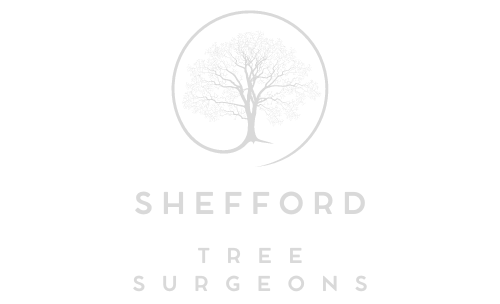Overgrown Trees Aren’t “Natural”—They’re Neglected
Introduction
There’s a common belief among homeowners that letting trees grow freely is the most “natural” and environmentally friendly choice. But in reality, an overgrown tree isn’t thriving—it’s suffering. Unmanaged trees can become unstable, diseased, and even dangerous, especially in residential areas like Shefford and surrounding parts of Bedfordshire.
At Shefford Tree Surgeons, we believe in working with nature—not abandoning it. Responsible tree care enhances growth, strengthens structure, and preserves both beauty and safety. In this article, we’ll explain why overgrown trees are a sign of neglect, not nature at its best, and what you can do to ensure your trees are healthy, balanced, and well-maintained.
Key Takeaways
- Overgrowth is a sign of neglect, not health or vitality.
- Unmanaged trees pose risks to property, safety, and surrounding plant life.
- Proper pruning supports healthy development, stronger limbs, and improved longevity.
- Regular tree maintenance helps identify disease, pests, and structural problems early.
- Professional tree care improves aesthetics, safety, and property value.
Overgrowth Is Stress, Not Strength
Left unchecked, trees can grow in ways that are structurally unsound or unsustainable. Overcrowded branches compete for sunlight and nutrients, leading to weaker limbs, uneven growth, and vulnerability to disease. Far from being a sign of strength, excessive size often reflects a lack of attention.
Branches that grow too long or dense can become heavy and unstable, especially in storms. And when trees are left to their own devices, they’re more likely to develop crossing limbs, tight branch angles, and decay-prone areas—all of which increase the risk of failure.
Safety Risks Lurking in the Canopy
One of the most pressing reasons to manage tree growth is safety. Overgrown trees can cause:
- Falling limbs that damage roofs, cars, or fences
- Obstructed driveways or walkways
- Interference with power lines or neighbouring properties
- Reduced visibility on roads or footpaths
In residential areas like Shefford, where properties are often close together, these risks can escalate quickly. A tree that seems “natural” could be one storm away from becoming a serious hazard.
Overgrowth Damages the Whole Garden
It’s not just the tree that suffers—your entire garden can be affected. Dense canopies block sunlight from reaching lawns, shrubs, and flower beds below. That’s why you might notice struggling grass or patchy flower borders beneath a large, unpruned tree.
Additionally, tree roots that aren’t managed properly can invade drains, lift paving stones, or damage foundations, leading to costly repairs. Pruning helps direct energy away from unnecessary limb growth and towards a healthier, more balanced root and branch system.
Disease and Pest Risk Increases Without Management
An overgrown tree is harder to inspect and treat. Decay can set in without being noticed, pests can nest in concealed areas, and diseases like canker or dieback may go undetected until it’s too late. Routine trimming allows professional tree surgeons to:
- Spot signs of disease or infection
- Remove infected limbs early
- Improve airflow to reduce fungal growth
- Maintain a manageable structure for future treatment
Preventative maintenance is far more effective—and far less costly—than emergency interventions.
Aesthetic and Property Value Matter Too
Let’s not forget curb appeal. A well-shaped, healthy tree adds beauty, shade, and structure to your landscape. In contrast, an unkempt tree can make your garden look neglected, block desirable views, and reduce the overall attractiveness of your property.
If you’re thinking of selling, or just want your home to stand out for the right reasons, professional tree care plays a key role. Buyers and neighbours alike notice a garden that’s well looked after—and that includes the trees.
Signs Your Tree Is Overgrown
Not sure if your tree needs attention? Look for these warning signs:
- Branches touching roofs, walls, or windows
- Dense, shaded areas where no grass grows
- Excessive leaf or twig drop
- Crossed or rubbing branches
- Trees leaning or showing surface root exposure
- Reduced visibility or access in your garden
If any of these apply, it’s time to bring in the professionals.
Conclusion
Nature needs guidance. Overgrown trees aren’t wild and wonderful—they’re a liability in waiting. Proper pruning and professional maintenance ensure your trees are not only healthy and beautiful, but also safe and sustainable for years to come.
At Shefford Tree Surgeons, we provide expert tree care tailored to the needs of each client and tree. Whether you’re dealing with a single problem limb or a garden full of unruly giants, we’re here to help. Don’t let neglect disguise itself as “natural”—get in touch today and give your trees the care they truly need.
Call us on: 01462 418 496
Click here to find out more about Shefford Tree Surgeons
Click here to complete our contact form and see how we can help with your tree care needs.

